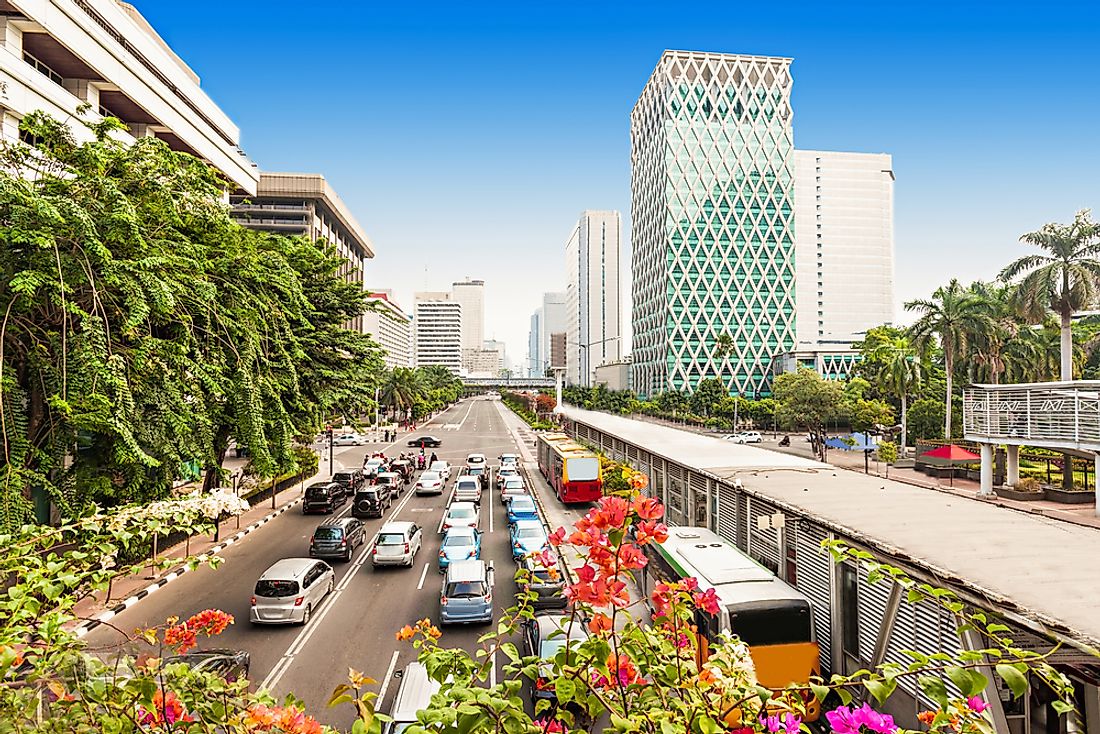What Is The Capital Of Indonesia?

Located on the Java island's northwest coast is Jakarta, the capital city of Indonesia, and the country's most populous city as well. Java Island is also the most populous island in the world. The city of Jakarta is Indonesia's center for politics, economics, and culture. As of 2014, the city of Jakarta had an estimated population of more than 10 million people. Jabodetabek is the name given to the greater metropolitan area of Jakarta. The name Jabodetabek was created by combining the syllables of the cities that make up the greater metropolitan area. With a population of more than 30 million people, according to a census done in 2010, Jabodetabek is the world's second largest urban settlement. The city of Jakarta is a melting pot of many cultures and communities. The main reason is that the city does not only offer a potentially high standard of living but also has numerous business opportunities attracting migrants from different parts of the country.
The History Of Jakarta
The city of Jakarta was initially established as Sunda Kelapa during the fourth century. Sunda Kelapa developed as an important trading port for the Sunda Kingdom. The city was also known as Batavia, at the time and it was the Dutch East Indies's de facto capital. However, after the Second World War, Indonesian nationalists renamed Batavia as Jakarta after the country attained its independence in 1946, from the Dutch. During Indonesia's fight for independence, the republic’s capital was established in Yogyakarta by the Indonesian Republic. However, Jakarta was once again made the country's capital city in 1950. Sukarno who was the country's founding president had a vision of Jakarta as a great international city in the future initiating huge government- funded projects featuring modern architecture. The city's infrastructure went through a series of developments under the leadership of Lieutenant General Ali Sadikin who served as Jakarta's Governor from 1966 to 1977. Sadikin's governorship was at the time when Jakarta was declared a 'special capital region.'
The Geography Of Jakarta
The city of Jakarta covers an area of 255.4 square miles of land and 2,694 square miles of sea area. North of the city specifically in Jakarta Bay lies the Thousand Islands which are part of the city's administration. According to the Köppen climate classification system, the city has a tropical monsoon climate experiencing a wet season which runs from October to May. As of June 2011, the city only had 10.5% of open green spaces but hopes to increase the number in the future.
Language, Ethnicity, And Religion
Regarding language and ethnicity, Jakarta is highly diverse. By 2000 the city's population comprised of 1.62% Malays, 3.18% Minangkabau, 3.61% Batak, 5.53% Chinese, 15.27% Sudanese, 27.65% Betawi, and 35.16% Javanese. The official language of Jakarta is Bahasa Indonesia while English is widely spoken as the second language. Dutch is also spoken by some senior citizens in the city. Islam is the predominant religion in Jakarta with about 85.36% of the city's population according to a census of 2010.
Present Day Jakarta
Six companies listed on the Forbes Global 2000 have their headquarters in the city of Jakarta as of 2017. As of 2016, Jakarta was also home to two of Fortune 500 companies. In the 2016 Globalization and World Cities Research Network report, Jakarta is listed as an Alpha Global City. The city's GDP was estimated at US$321.3 billion by Brookings Institution based on the global metro monitor. Among the 200 largest cities in the world, Jakarta's economic growth was ranked 34th. The city has experienced a more rapid growth compared to other big cities such as Bangkok, Kuala Lumpur, and Beijing.







